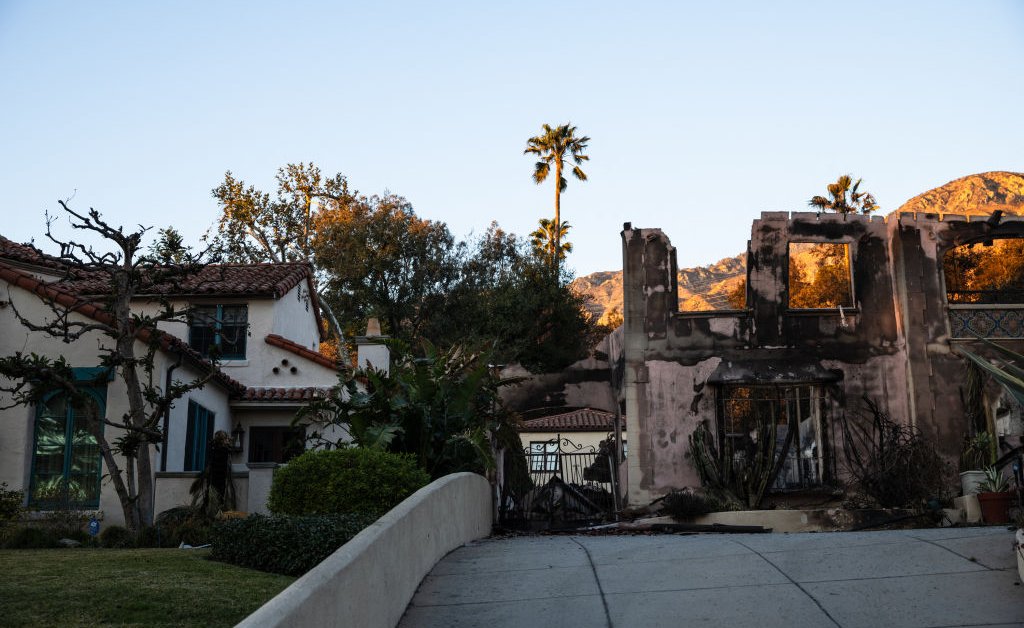Calculating The Economic Impact Of L.A. Wildfires: A Comprehensive Analysis

Calculating The Economic Impact Of L.A. Wildfires: A Comprehensive Analysis. Discover more detailed and exciting information on our website. Click the link below to start your adventure: Visit Best Website. Don't miss out!
Table of Contents
Calculating the Economic Impact of L.A. Wildfires: A Comprehensive Analysis
Devastating wildfires continue to plague Los Angeles, leaving behind a trail of destruction that extends far beyond the charred landscape. The immediate human cost is heartbreaking, but the long-term economic consequences are equally staggering and require careful analysis. This article delves into the complex process of calculating the true economic impact of L.A. wildfires, examining both the immediate and lingering effects on the region's economy.
The Immediate Economic Fallout: A Tangible Toll
The immediate aftermath of a wildfire in Los Angeles brings a torrent of economic disruption. The most visible costs include:
- Property Damage and Loss: The destruction of homes, businesses, and infrastructure represents a monumental financial blow. Insurance claims surge, but often fall short of covering the total losses, leaving many residents and businesses facing crippling debt. The cost of rebuilding is substantial, further straining the economy. This includes not only the structures themselves but also the land, which may be rendered unusable due to soil erosion and contamination.
- Disruption to Businesses: Businesses forced to close due to fire damage, evacuations, or reduced customer traffic face significant revenue losses. Supply chain disruptions can ripple across the economy, impacting employment and consumer prices. Tourism, a vital part of the L.A. economy, suffers when popular destinations are affected.
- Emergency Response Costs: The cost of firefighting, search and rescue operations, and emergency medical services is immense. Taxpayers bear the burden of funding these crucial but expensive operations.
- Healthcare Costs: Wildfires cause respiratory illnesses and other health problems, leading to increased demand for healthcare services. The long-term health effects, including mental health issues related to trauma and displacement, also contribute to significant costs.
The Long-Term Economic Scars: A Lingering Impact
The economic consequences of L.A. wildfires extend far beyond the immediate aftermath. The long-term effects include:
- Reduced Property Values: Properties in areas affected by wildfires often experience a significant decrease in value, impacting homeowners and the overall tax base of the region. This can lead to a vicious cycle, where lower property values translate to reduced tax revenue for essential services.
- Increased Insurance Premiums: Following devastating wildfires, insurance companies often raise premiums, making homeownership and business operations more expensive. This can discourage investment and hinder economic recovery.
- Environmental Remediation Costs: Cleaning up wildfire debris, restoring damaged ecosystems, and mitigating future wildfire risks represent substantial ongoing costs for both public and private entities. This includes extensive efforts to prevent soil erosion and control post-fire runoff.
- Lost Productivity and Employment: The disruption caused by wildfires can lead to lost productivity and job losses across various sectors, impacting the overall economic output of the region. The rebuilding process, while creating some jobs, may not fully compensate for these losses.
Modeling the Economic Impact: Challenges and Approaches
Accurately calculating the total economic impact of L.A. wildfires presents significant challenges. Economic models must consider:
- Direct vs. Indirect Costs: Differentiating between direct costs (property damage, emergency response) and indirect costs (lost tourism, reduced productivity) is crucial for a comprehensive assessment.
- Long-Term vs. Short-Term Impacts: Capturing the full extent of the economic damage requires assessing both immediate losses and the long-term consequences on the regional economy.
- Data Collection and Analysis: Gathering accurate and reliable data on property damage, business losses, and other economic indicators is essential for robust modeling.
Advanced econometric modeling techniques are employed, incorporating data from insurance claims, government records, and surveys to estimate the comprehensive economic burden of wildfires. This detailed data analysis helps policymakers and communities understand the scale of the problem and make informed decisions regarding prevention, mitigation, and recovery efforts.
Looking Ahead: Mitigation and Resilience Strategies
Investing in wildfire mitigation and resilience strategies is paramount to minimizing future economic losses. This includes:
- Improved Forest Management: Proactive forest management practices, such as controlled burns and thinning, can significantly reduce the risk and intensity of wildfires.
- Community Preparedness: Educating residents and businesses about wildfire preparedness and evacuation procedures is crucial for minimizing damage and ensuring community safety.
- Infrastructure Upgrades: Investing in fire-resistant building materials and infrastructure can limit property damage.
- Economic Diversification: Reducing reliance on sectors vulnerable to wildfire damage can improve the region's overall economic resilience.
The economic consequences of L.A. wildfires are profound and far-reaching. By investing in prevention, preparedness, and robust recovery strategies, we can strive to mitigate the devastating economic impact of future events and build a more resilient region. Learn more about wildfire preparedness and community resilience initiatives by visiting [link to relevant resource].

Thank you for visiting our website wich cover about Calculating The Economic Impact Of L.A. Wildfires: A Comprehensive Analysis. We hope the information provided has been useful to you. Feel free to contact us if you have any questions or need further assistance. See you next time and dont miss to bookmark.
Featured Posts
-
 Trumps Tariff Threat Canada Prepares For Strong Countermeasures
Jan 23, 2025
Trumps Tariff Threat Canada Prepares For Strong Countermeasures
Jan 23, 2025 -
 Controversy Erupts Orlando Venues Liquor License Revoked Over Drag Show Event
Jan 23, 2025
Controversy Erupts Orlando Venues Liquor License Revoked Over Drag Show Event
Jan 23, 2025 -
 Burn Out Chez Les Streameurs Le Temoignage Poignant D Ultia
Jan 23, 2025
Burn Out Chez Les Streameurs Le Temoignage Poignant D Ultia
Jan 23, 2025 -
 Climate Change And Trumps Presidency Executive Order Effects
Jan 23, 2025
Climate Change And Trumps Presidency Executive Order Effects
Jan 23, 2025 -
 Kim Jong Jin Ungkap Kekecewaan Shin Tae Yong Usai Tudingan Marc Klok
Jan 23, 2025
Kim Jong Jin Ungkap Kekecewaan Shin Tae Yong Usai Tudingan Marc Klok
Jan 23, 2025
